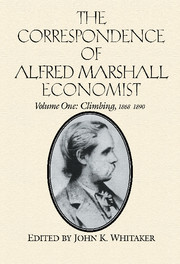Editorial Practices
Published online by Cambridge University Press: 29 March 2010
Summary
Whenever the original could not be traced (for example, letters published in The Times) the original printing was taken as the source and reproduced as closely as possible, apart from the standardization of layout and typography. If the original manuscript or typescript of a letter was traced, the transcription follows it as faithfully as is compatible with comprehensibility. The original spelling, capitalization, punctuation, accents, and abbreviations are reproduced, but layout is standardized (for example, postscripts squeezed into the heading of a letter are placed at the end). Missing periods are added at the ends of sentences in a few cases. Editorial insertions into the text are accounted for in footnotes and are normally enclosed in square brackets. Alterations made by the writer during composition are described only when the change seems to be of some interest.
It should be observed that Marshall's own spelling veers between ‘labor’ and ‘labour’, ‘shew’ and ‘show’, and so on. He rarely uses the apostrophe, letting the context indicate possessive usage, and persistently writes the name of the publisher Macmillan as MacMillan. Marshall's abbreviations are for the most part self-evident, but it might be noted here that the frequently used abbreviation ‘Mo Sc’ stands for ‘Moral Science(s)’. Other abbreviations whose meaning may not be clear are explained in footnotes.
- Type
- Chapter
- Information
- The Correspondence of Alfred Marshall, Economist , pp. xiii - xviPublisher: Cambridge University PressPrint publication year: 1996



